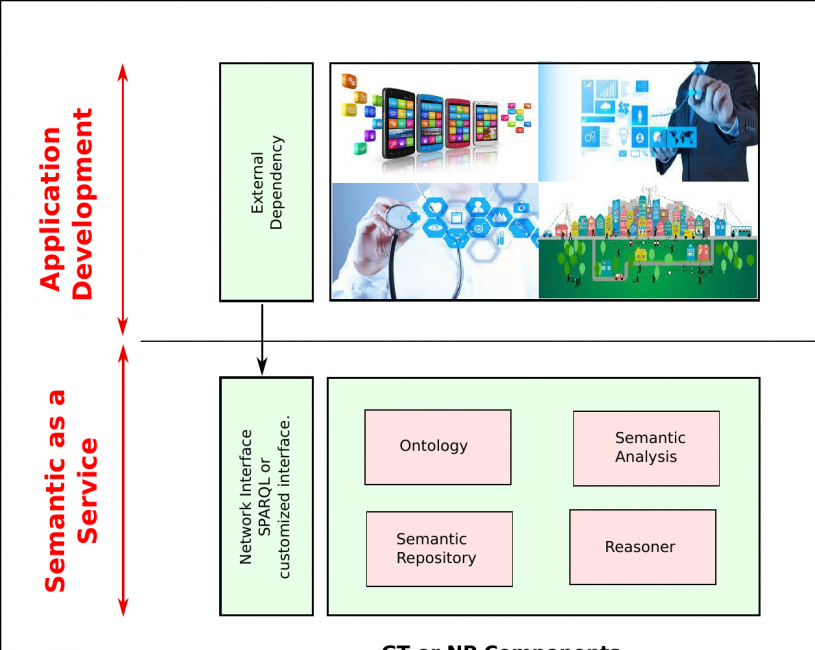Previous year's Nominees

Semantic as a service. The complexity of semantic engineering is encapsulated inside GT and NP Components and hidden behind a very simple network interface.
The application development is traditional because majority of semantic related aspects are encapsulated in NP or GT Components that are external and already accomplished.
Section One: Innovation - Semantic as a Service
We identified two major difficulties that face incorporation of semantic technology in traditional software development. These two difficulties are:
1- Semantic components such as ontology development, reasoning, and semantic query are complex and require long learning phase from normal software engineer who did not have previous training in the domain.
2- Scalability and performance doubts. Some projects suspect that existing technologies in semantic engineering might fail for large scale applications. Example projects could be smart city systems that include several countries.
For the first concern, the innovation in GT and NP components is that we elegantly hide all of semantic complexities from our customer. We call this approach: "semantic as a service". All semantic related details are hidden inside GT components (or NP components). The visible part is the service point that expose customized service that match the application needs. As result, what the customer gets is an easy to use service that fit her technological needs. Using semantic as a service approach, the customer can develop his semantic based application using traditional software development without involving in the complex details of semantic technology such as decidability of reasoning algorithms, etc. This is very important to allow majority of software companies to adopt semantic technology. Please see figure 1 in attached document.
For the second concern, our strategy is to have advanced performance optimization intervention at all levels including software, hardware, and files. Also, we have developed advanced fine tuning between software and hardware. This is the result of five years of state of art R&D. The result is high performance reasoning and query semantic system. Please see tables 1-9 in attached document. Again, semantic as a service approach is a key in this regard. All hardware and software complexities are hidden behind the easy to use interface (service).
The two factors that summarize the innovation of GT and NP components are:
1- Performance of our software. Please see tables 1-9 in attached document.
2- Ease of use through customized interface (service). Please see figure 1 in attached document.
Section Two: Product Description
The implementation of our vision, semantic as a service, is achieved via GT and NP products.
GT and NP components aims at providing semantic backend support layer for all semantic-based
applications such as: smart city, mobile applications, context-aware applications, semantic interoperability, semantic search, etc. The semantic support include:
1- High performance semantic back-end support.
2- ABox and TBox hosting with IP access point.
3- Ontology development service.
It is possible to choose between:
1- Normal Semantic (RDF Store). This is the NP series.
2- Rich Semantic (Formal Ontology). This is the GT series.